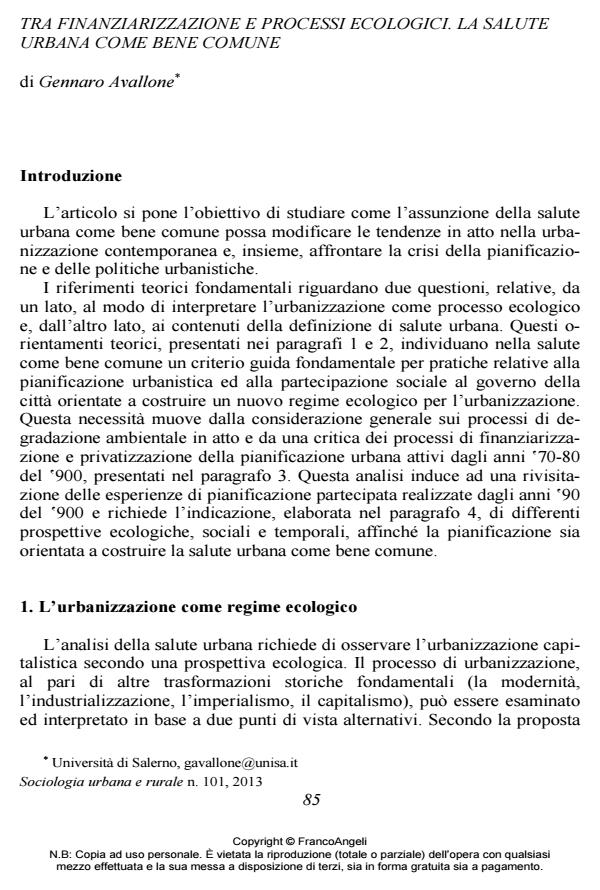Tra finanziarizzazione e processi ecologici. la salute urbana come bene comune
Titolo Rivista SOCIOLOGIA URBANA E RURALE
Autori/Curatori Gennaro Avallone
Anno di pubblicazione 2013 Fascicolo 2013/101
Lingua Italiano Numero pagine 15 P. 85-99 Dimensione file 118 KB
DOI 10.3280/SUR2013-101008
Il DOI è il codice a barre della proprietà intellettuale: per saperne di più
clicca qui
Qui sotto puoi vedere in anteprima la prima pagina di questo articolo.
Se questo articolo ti interessa, lo puoi acquistare (e scaricare in formato pdf) seguendo le facili indicazioni per acquistare il download credit. Acquista Download Credits per scaricare questo Articolo in formato PDF

FrancoAngeli è membro della Publishers International Linking Association, Inc (PILA)associazione indipendente e non profit per facilitare (attraverso i servizi tecnologici implementati da CrossRef.org) l’accesso degli studiosi ai contenuti digitali nelle pubblicazioni professionali e scientifiche
L’articolo ha l’obiettivo di studiare come l’assunzione della salute urbana come bene comune possa modificare le tendenze dell’urbanizzazione contemporanea e affrontare la crisi della pianificazione. Il testo muove da due assunti teorici. Da un lato, l’urbanizzazione viene interpretata come un processo ecologico. Dall’altro lato, si individua nella salute come bene comune un criterio guida per pratiche di pianificazione e partecipazione orientate a costruire un nuovo regime ecologico urbano.
Parole chiave:Urbanizzazione, regime ecologico, natura, capitalismo, temporalità, socialità.
Gennaro Avallone, Tra finanziarizzazione e processi ecologici. la salute urbana come bene comune in "SOCIOLOGIA URBANA E RURALE" 101/2013, pp 85-99, DOI: 10.3280/SUR2013-101008